Garden space and tasks can be divided and shared in numerous ways
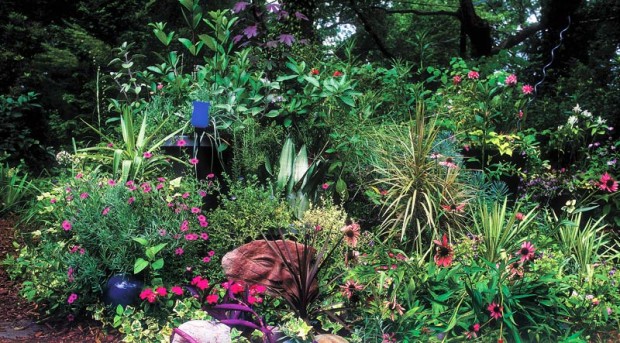
By Janet Macunovich / Photos by Steven Nikkila
Some people wear all hats in a garden: designer, supreme commander, sole worker, and undisputed owner of all praise of their property. It’s an exhilarating kind of gardening, if a bit lonely.
It may also be the exception. More people are gardening than ever before and households consist of ever more diverse collections of people, so gardens are now being shared by partners, teams and even opposing camps. Today, horticultural skill no longer guarantees gardening success. A gardener needs a green thumb plus diplomacy, humor and the art of negotiation.
Looking at relationships that grow within shared gardens and examining your own sharehold is a way to improve your own non-horticultural gardening skills.
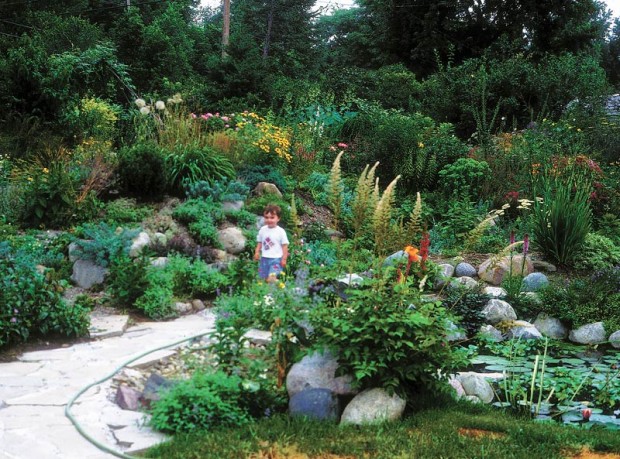
There are traditional ways to share a garden. One gardener designs, while planting goes to the other(s). One grows ornamental plants, leaving vegetables to the other(s). One mows, the beds belong to the other(s). One is master of everything woody in a yard while dominion over “soft” plants—flowers and vegetables—goes to the other(s). Each gardener may have a distinct area, as when two gardeners agree that one gardens in front, the other in back. Or distinctions may be by pecking order as when one directs while the other does as told.
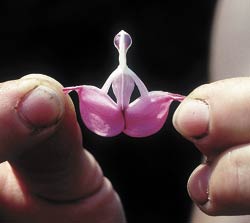
Division of duties might be mercurial—some gardeners modify their agreement for each plant and project. It can also be adversarial – I’ve seen gardeners make controversial changes while a partner is out of town, hide expensive purchases, even call in referees. The resulting garden might be uncomfortable for some, but not for those who like some spice, have a keen sense of humor or revel in a challenge.
There are also unique approaches to sharing. One couple employed the “distinct area” approach—he gardened in front, she in back—until he became bored with the front. Its public aspect was restrictive of personal expression. They began gardening the front as a team but in back, unable to compromise their divergent tastes, they drew a line down the middle of the yard. On one side, she gardens with wild abandon. Across the way, his beds are a study in formality. The view from the back door can be bizarre, until one learns to focus not in the middle but to left or right.
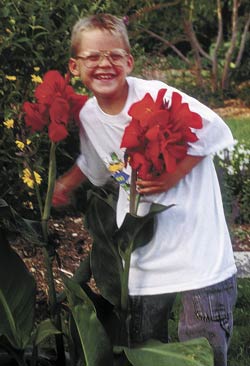
Another unusual sharing is “my year, your year.” The people I saw employing it were partners who had done standard sharing for many years and had reached a base agreement as to overall layout and annual budget. In odd-numbered years now she is head gardener, with sole authority to redesign, while he is “under gardener.” In even years, the roles reverse. These people are not overly competitive and secure in other aspects of their relationship, so the results are fun to see.
In gardens shared by children and adults, a common approach is “I made this for you,” in which the adult designs and plants a play area within the garden. Another standard is to give children distinct areas: “these two rows in the vegetable garden,” and authority with some strings attached: “you can plant anything you want so long as…” Less often, kids are encouraged but not required to garden and carve out places of their own over time.
What is your garden sharing arrangement? How do you and others involved feel about your roles? Is change or clarification needed?
One woman learned abruptly that she and her husband had divided yard work by type of tool involved. Everything that could be done in the yard that involved power tools was “his.” Everything that required small tools or fingers alone was “hers.”
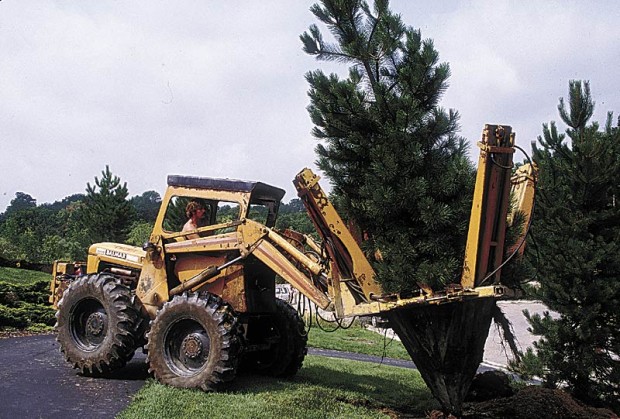
One man redrew his sharing arrangement when his daughter bought a home and needed landscaping help. His wife—always the planner and director in their shared garden—was out of town so he tackled the landscape renovation on his own. He was surprised at how much fun it was. He and his wife now deal as equals in their garden – the wheels of that change having been well greased by the fine landscape he designed and executed at their child’s home.
Joint responsibility for pruning may be one of the rarest arrangements in shared gardening. I first realized this after a neighbor borrowed my pole pruner. His role had previously restricted him to the lawn and vegetable garden. Upon the loan, he discovered both joy of pruning plus the power of the right tool and cut with such glee that his wife said, on returning the pole pruner to me, “If you ever loan him this again I’ll divorce both of you.”
Children grow quickly. Their interest in a garden sharehold can change as often as their shoe size. When my children were very young, they shared as spectators in the garden. From backpacks on our backs, they saw what we saw and heard what we said but were not at first allowed to touch. Later they were assigned to certain areas and allowed to do as they pleased.
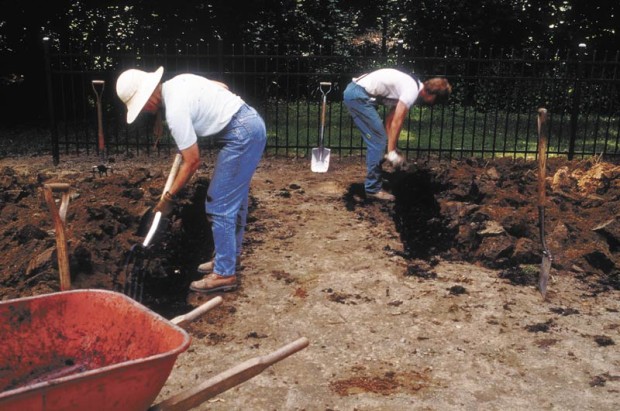
As they grew and their interests changed, we tried to change their shareholds to match. For a time, when our son found destruction to be a fascinating pursuit, we included him in anything that required the use of an ax or hammer. When both children developed a yen for privacy, their garden area moved from a central, open spot to a secluded corner. We didn’t make or assign that move but came home to a fait accompli, a corner having been usurped and redesigned, complete with water garden. We might have been angry except that we accepted the mercurial nature of our shared garden contract.
Now that our children are grown, their corner is one of our favorite places. It may represent the first time we realized that our gardening relationships are worth far more than our gardens, but it won’t be the last.
My husband, Steven, and I started out sharing our yard by plant category—lawn was his, everything else was mine. His share of the bargain decreased as my beds encroached on the lawn. With less mowing to do he paid more attention to what I was doing and developed so much interest that he went back to school and completed a degree in horticulture. This called for a new garden sharing arrangement!
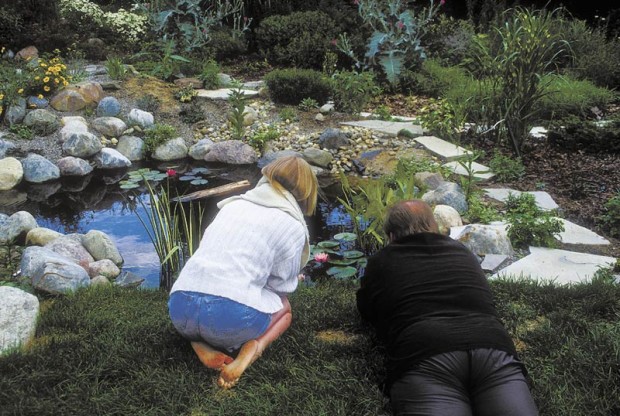
By gradual degrees and mutual consent, I retained responsibility and authority in the beds while he increased his participation in a way that pleased me and satisfied his intellectual and proprietary interests. His role is now that of occasional helpmate, full-time sounding board for ideas, sympathetic shoulder for tearful disasters, and proud partner in celebrating successes.
He was in his role as helpmate when I came home the other day. Coming in the door, I said, “Hi Cory. Where’s your Dad?”
“Padre got home about half hour ago. He’s in the back yard, weeding the patio.”
“Aw, isn’t that sweet!”
So I went out, sat down next to him and started pulling weeds from between the flagstones. We talked for a few minutes and then I thought to tell him, “Oh, you know that white turtlehead? That little piece that’s been struggling along for the past three years with just two stems? Well, I was out here this morning and it has three stems!”
As I said this, I walked over to where the turtlehead was planted, “It’s over here and this volunteer columbine is trying to crowd it so I… Steven, where’s the turtlehead? You didn’t pull the turtlehead?!”
Steven was not looking at me when I whirled around, but was already sifting through the pile of weeds he’d pulled.
Staring again at the turtleheadless place, I said, “LOOK at this, you didn’t even pull out ACTUAL weeds right next to it! And you left its roots in place! If it was a weed why did you just yank the top off? I really appreciate the weeding, dear, but come on now, did it look like any weed that you know?”
“Yes, it did look like a weed… I can’t remember right now which one, but it did. Here it is. No, wait, there should be one more piece…”
Holding the bits of plant in my hand, I reflected that my response was endangering a garden sharing arrangement worth far more than any plant. “I’m sorry. It’s okay. In fact, it might be very good. Will you help me pot up the pieces, like cuttings? They’ll probably root. And since the original roots are still in place to sprout again, we can end up with at least TWO plants. We’ll put them in two different places and double its chances of survival.”
Enjoy your garden. But treasure and protect your garden sharing relationships.
Janet Macunovich is a professional gardener and author of the books “Designing Your Gardens and Landscape” and “Caring for Perennials.” Read more from Janet on her website www.gardenatoz.com.

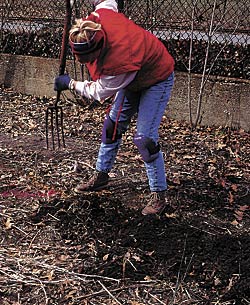
Leave a Reply